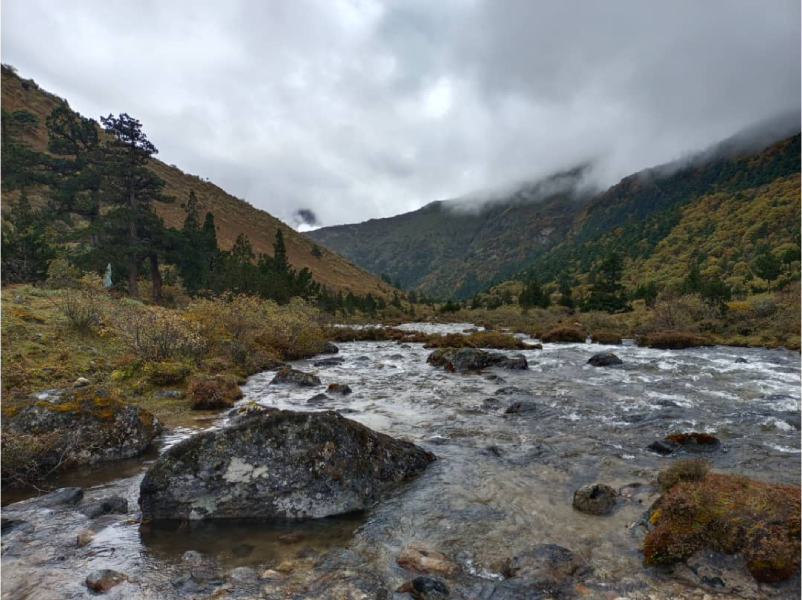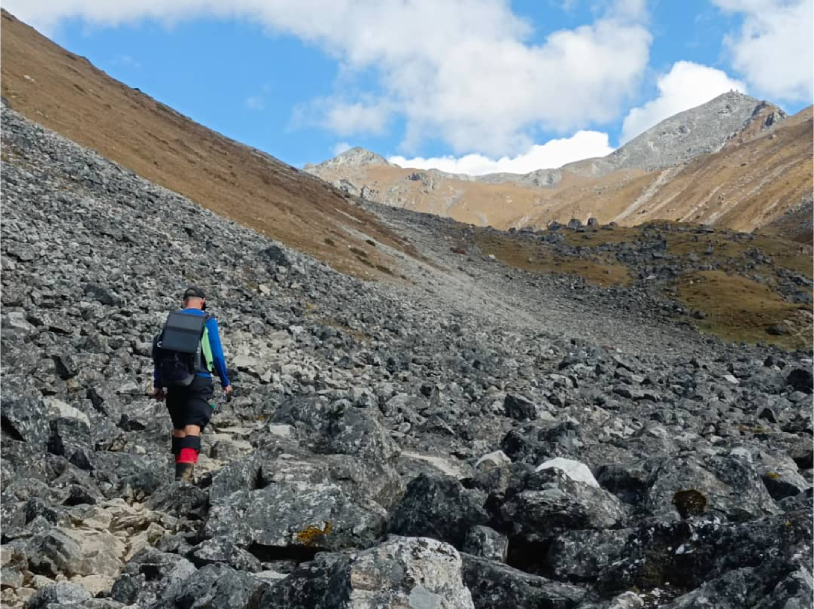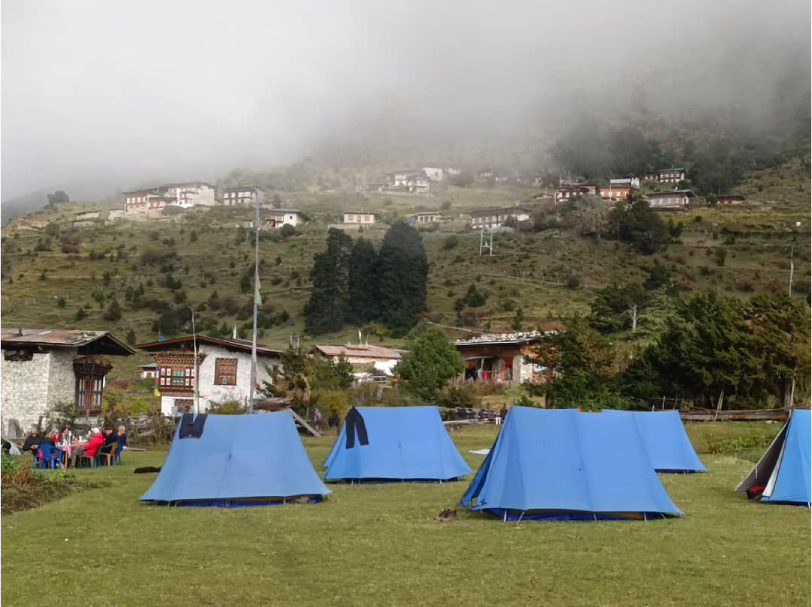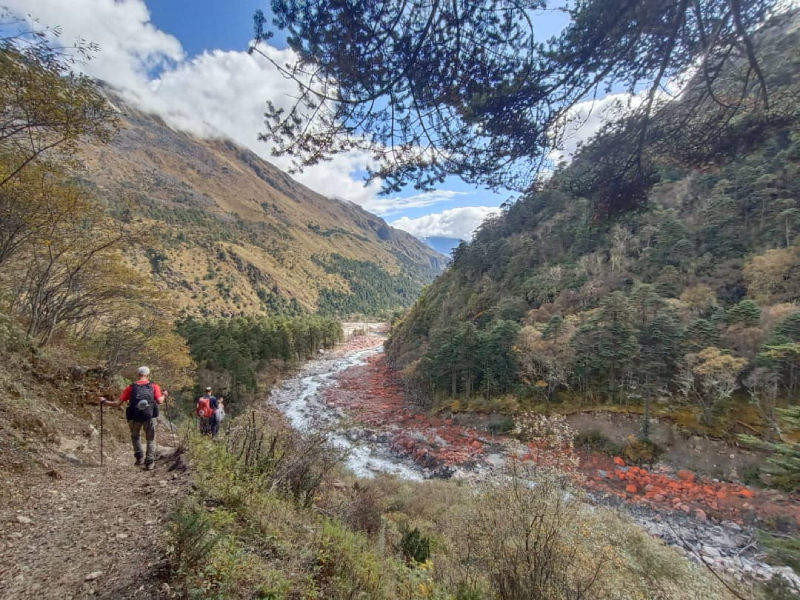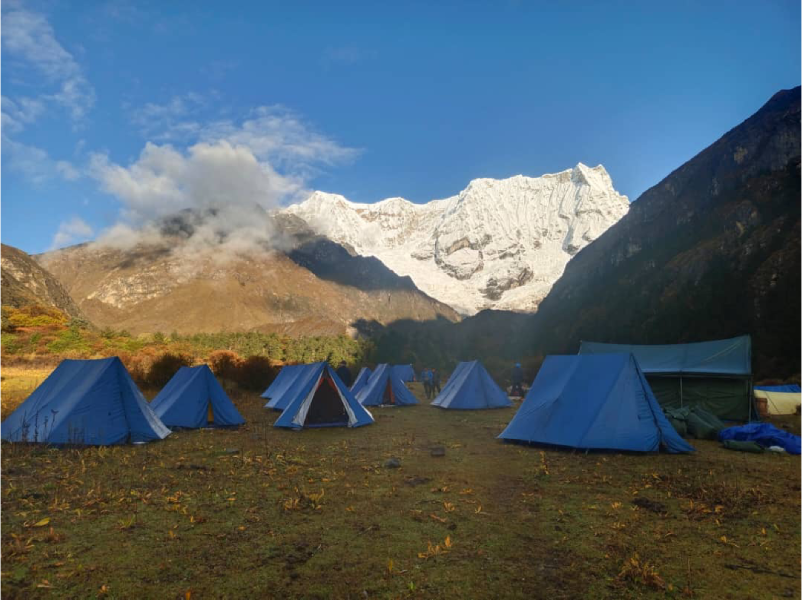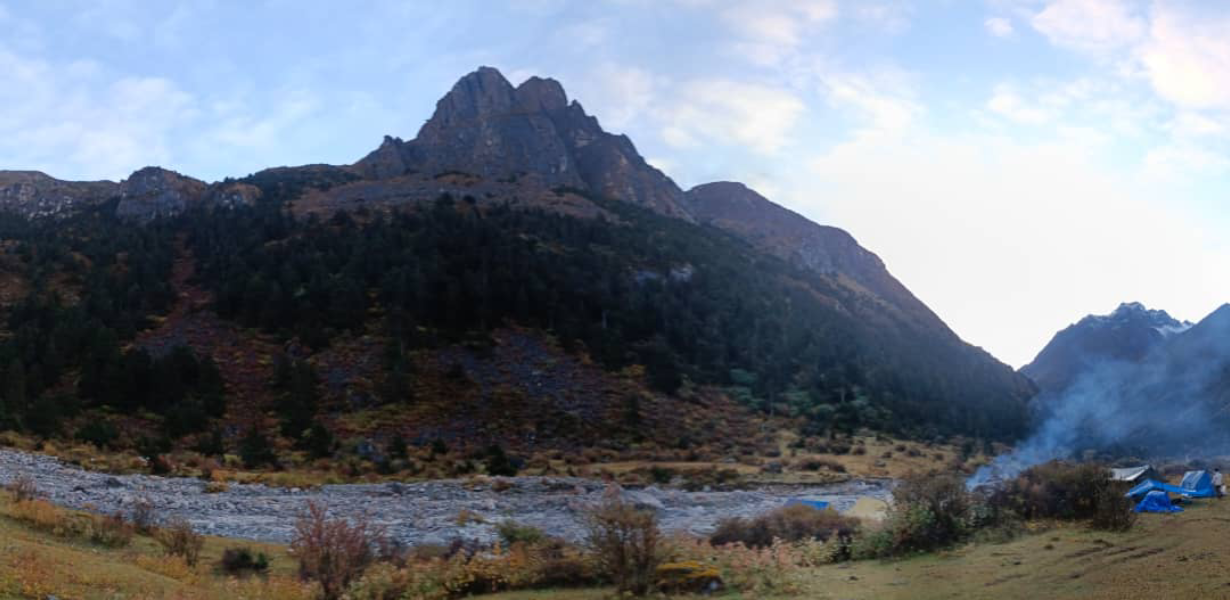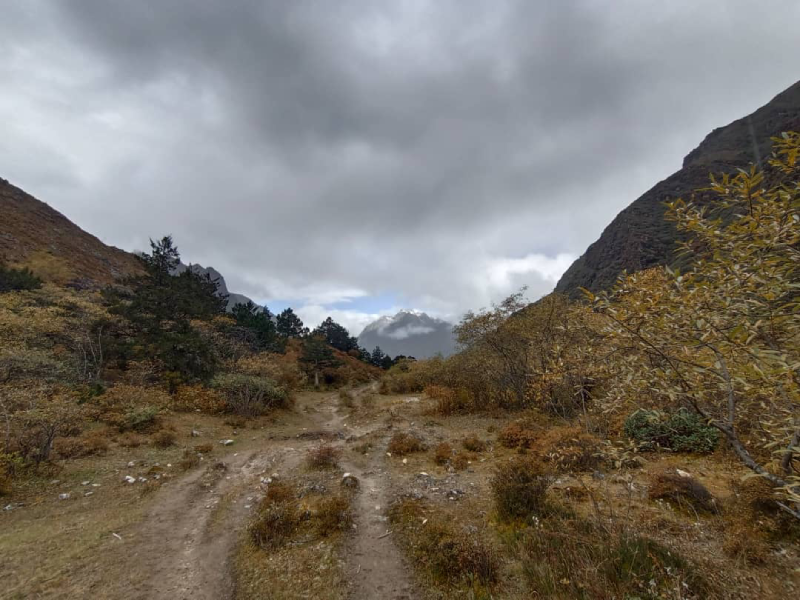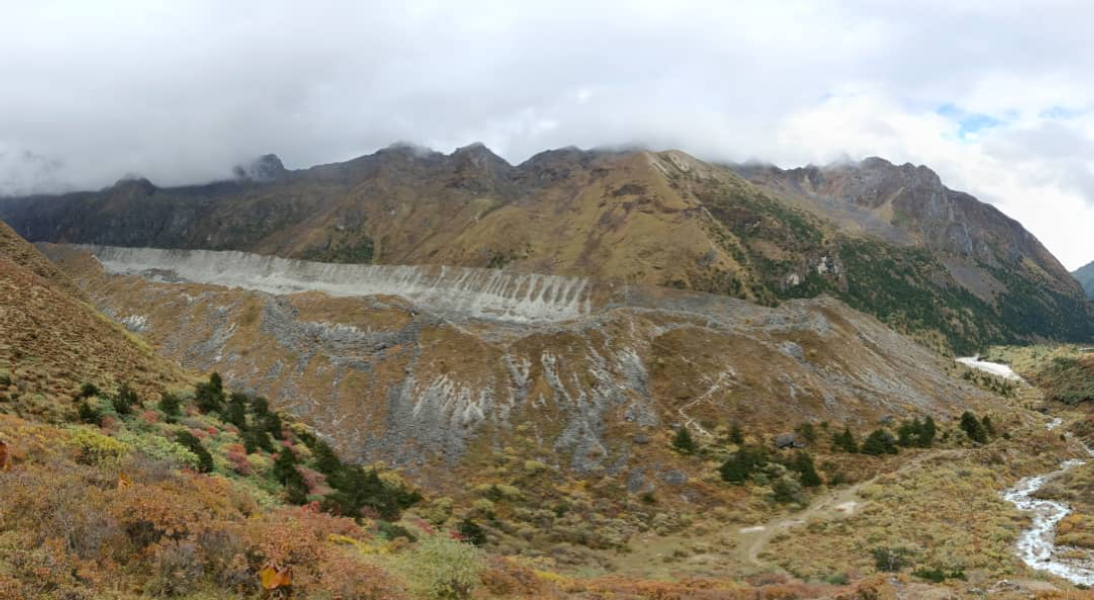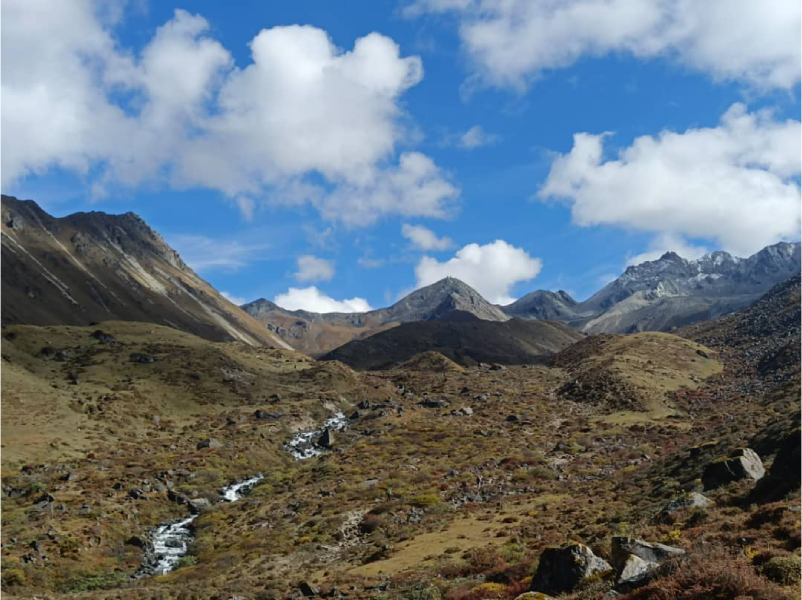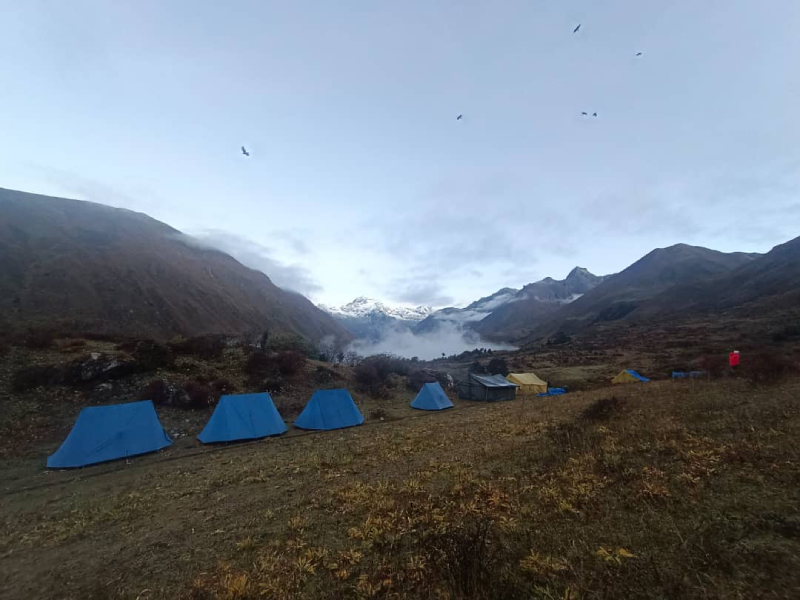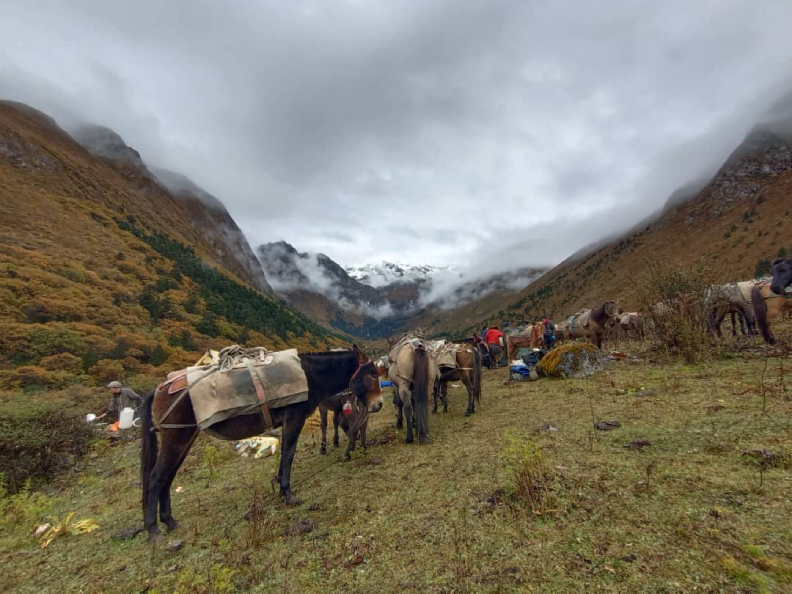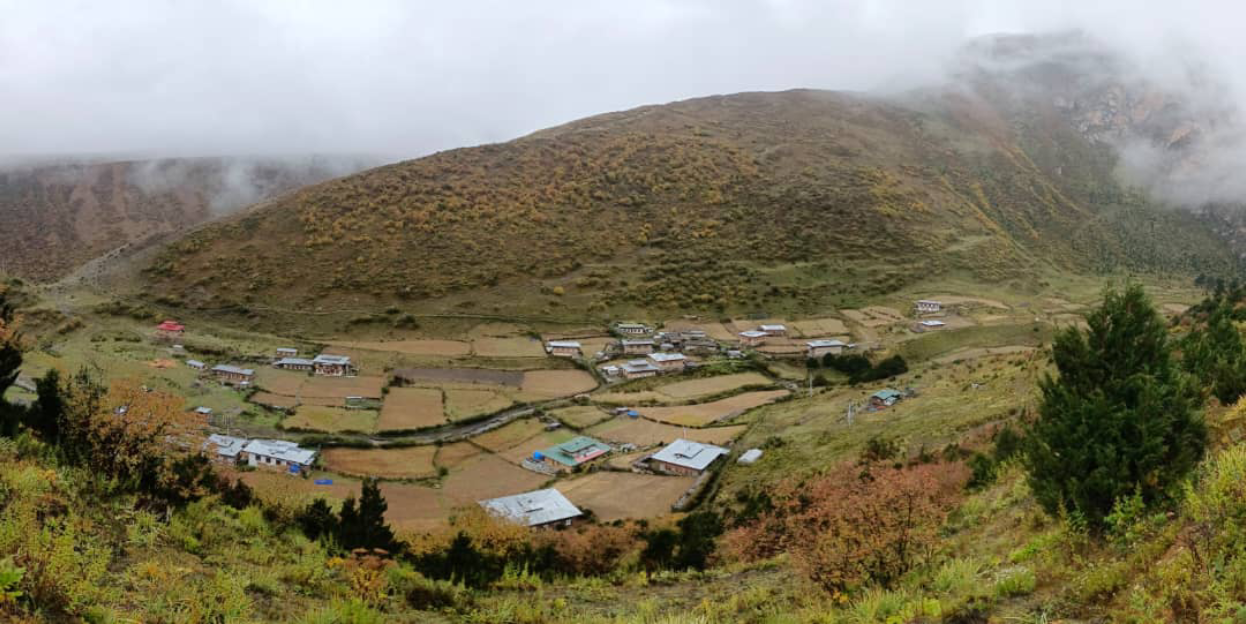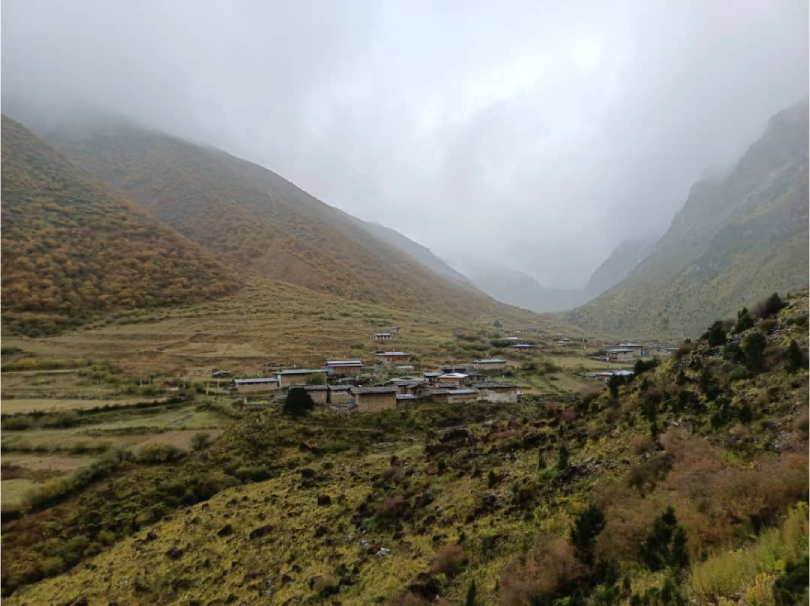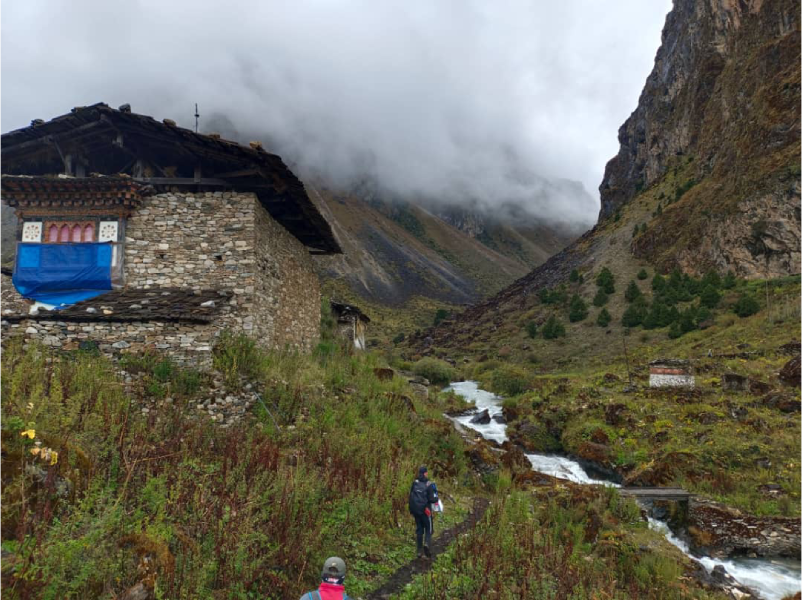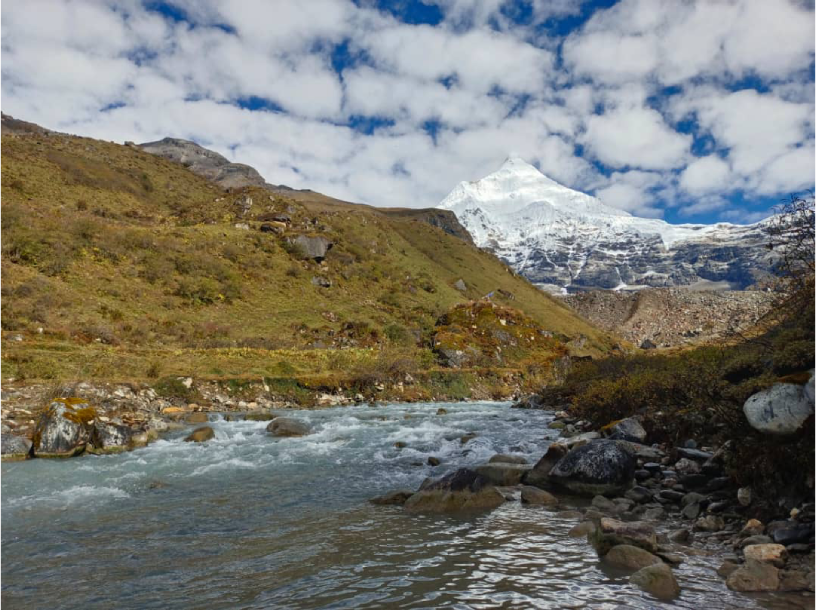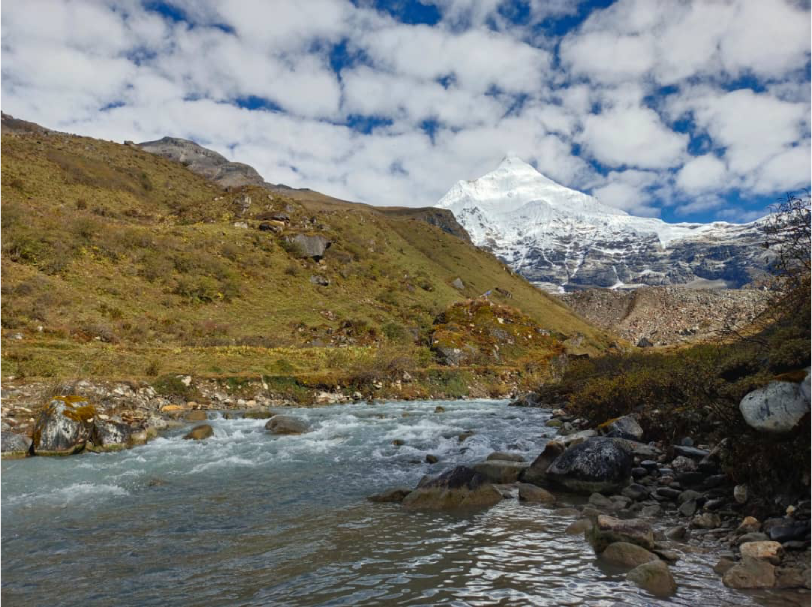The Laya Gasa Trek: A Blend of Adventure, Culture, and Relaxation
The Laya Gasa Trek: A Blend of Adventure, Culture, and Relaxation
The Laya Gasa Trek in Bhutan offers an extraordinary 21-day journey through untouched Himalayan wilderness. Venturing into the remote Laya region, trekkers immerse themselves in the vibrant traditions of the Laya people while enjoying breathtaking views of iconic peaks such as Jumolhari and Gangchen Ta. The trail weaves through dense forests, rugged mountain passes, and quaint villages, creating a seamless blend of natural splendor and cultural richness. Along the way, you’ll encounter nomadic yak herders and explore ancient monasteries that deepen the sense of connection to Bhutan’s heritage. The trek concludes in the tranquil village of Gasa, known for its rejuvenating hot springs, offering a perfect balance of adventure and relaxation in this remarkable Himalayan landscape.
Short Itinerary
| Title | Accommodation | Meals |
| Day 01: Arrival in Paro | -/L/D | Hotel |
| Day 02: Paro to Sharna Zampa | B/L/D | Simple Guest House |
| Day 03: Sharna Zampa to Soi Thangkha | B/L/D | Simple Guest House |
| Day 04: Soi Thangkha to Jangothang base camp | B/L/D | Simple Guest House |
| Day 05: Jangothang acclimatization and exploration | B/L/D | Simple Guest House |
| Day 06: Jangothang to Lingshi | B/L/D | Simple Guest House |
| Day 07: Lingshi to Chebisa | B/L/D | Simple Guest House |
| Day 08: Chebisa to Shoumothang | B/L/D | Simple Guest House |
| Day 09: Shoumothang to Robluthang | B/L/D | Simple Guest House |
| Day 10: Robluthang to Lingmithang | B/L/D | Simple Guest House |
| Day 11: Lingmithang to Laya | B/L/D | Simple Guest House |
| Day 12: Rest day at Laya | B/L/D | Simple Guest House |
| Day 13: Laya to Koena to Gasa | B/L/D | Simple Guest House |
| Day 14: Gasa to Paro | B/L/D | Hotel |
| Day 15: Final Departure | B |
Tour Program
Expand AllUpon arrival at Paro Airport, our Journey DMC representative will warmly welcome you and assist with all arrival formalities. As Bhutan’s gateway, Paro offers a stunning first glimpse of the country’s breathtaking landscapes and tranquil atmosphere.
After completing formalities, you’ll be transferred to your hotel to relax and settle in comfortably after your journey.
Paro is a charming town nestled in a scenic valley, known for its rich history, vibrant culture, and natural beauty. In the evening, enjoy a leisurely stroll through its quaint streets and savor local flavors at one of the cozy restaurants.
Hotel
-/L/D
The trek begins at the historic Drugyel Dzong (2,580m), located about 12 km north of Paro Valley. Here, you will meet your trekking crew and prepare to embark on a journey through some of Bhutan’s most breathtaking landscapes.
The trail starts along a wide path beside the Pa Chhu (Paro River), gradually ascending through scenic countryside dotted with rice paddies and millet fields. As the valley opens up, you’ll pass apple orchards, traditional farmhouses, and small settlements such as Mitshi Zampa and Sangatan.
Continuing through a dense blue pine forest, you’ll reach the army post at Gunitsawa (2,810m), where trekking permits are verified. Crossing the Pa Chhu via a wooden bridge, the trail then ascends to Sharna Zampa (2,870m), a tranquil campsite nestled in meadows surrounded by trees—an ideal spot for your first night on the trek.
Simple Guest House
B/L/D
Similar to the previous day, the trail follows the Pachhu (Paro River), meandering through pine, oak, and spruce forests with gentle ascents and descents. After approximately two hours of hiking and crossing several streams, you will reach Shingkharap, a stone house situated at 3,110 meters. Crossing the bridge to the left bank of the river, a hot lunch awaits you.
Continuing on, the trail comes to a junction: the left path is an ancient trade route to Tibet, while the right leads to a wooden bridge. Opting for the latter, you’ll ascend through rhododendron forests and, after crossing the bridge once again, arrive at the campsite at 3,750 meters, nestled within scenic meadows.
Simple Guest House
B/L/D
Today’s trek involves a moderate distance but a notable climb as the route rises above the tree line. Beginning at the camp, the trail heads toward an army post before following a river high above the forest canopy, revealing breathtaking vistas of towering mountain peaks.
After navigating a muddy stretch and passing a mani wall, you enter Yak Country, where a warm, satisfying lunch is served at a yak herder’s camp. The afternoon trek continues past small yak herding communities like Soe and Takethang, where hardy locals grow crops such as barley, potatoes, and turnips.
Crossing an open plateau and climbing along a mountain stream, the path leads through Dangochang village before reaching the scenic campsite of Jangothang, perched at 4,040 meters. From here, you’ll be rewarded with sweeping, unforgettable views of Mount Jumolhari and Jichu Drake.
Simple Guest House
B/L/D
Today offers a four-hour acclimatization hike north of your camp, ascending an open, trail-less slope that stretches endlessly upward. The climb rewards you with stunning views of Mt. Jichu Drake, standing tall at 6,989 meters. For those seeking a greater challenge, a further scramble up to 4,895 meters—higher than Mont Blanc—provides an extraordinary vantage point overlooking Mount Jumolhari.
Along the way, be on the lookout for elusive blue sheep, vibrant Himalayan rhubarb, soaring griffon vultures and golden eagles, as well as Bhutan’s national flower, the rare blue poppy. The Jangothang base camp sits on a flat grassy plateau beneath the towering peaks, marked by the ruins of an ancient fortress perched on a nearby hill.
Due to the high altitude, this day serves as an essential rest stop to acclimate, as many trekkers experience symptoms of mountain sickness. Whether you choose to explore the slopes or relax in camp, the day promises a memorable and enriching experience.
Simple Guest House
B/L/D
Today’s trail begins by following a stream for about thirty minutes before crossing a bridge to the right bank. The climb to the first ridge rewards you with stunning views of Jumolhari (7,314m), Jichu Drake (6,989m), and Tsherim Gang (6,789m). The path then levels out briefly as you head toward the valley, before ascending again to the Ngye La Pass at 4,700 meters.
After crossing the pass, the trail descends gradually to your campsite, offering sweeping panoramic views of the surrounding peaks and the historic Lingshi Dzong. Time permitting, a side visit to Lingzhi Dzong—a small fortress perched above Lingzhi village—is highly recommended. This fortress once served as a resting place for Buddhist pilgrims and a strategic defense post against Tibetan and Mongol invasions. The day’s camp is set at 4,010 meters, surrounded by breathtaking mountain scenery.
Simple Guest House
B/L/D
Perched atop a hill, Lingshi Dzong offers sweeping views of lush hills, meandering rivers, and towering mountain peaks. This historic fortress once served as a vital stopover for Buddhist pilgrims and stood as a stronghold against Tibetan and Mongol invaders, reflecting the area’s rich heritage.
Today’s trek is gentle, winding through local villages and yak herders’ settlements. After a midday break, a short walk leads to Chebisa, a quaint village famed for its clear, sparkling waterfall.
The day ends with a peaceful camp beside a stream at 3,850 meters, providing a tranquil retreat under the mountain skies.
Simple Guest House
B/L/D
The trek for today kicks off with a challenging climb up a ridge to the Gogu La Pass at 4,500 meters, a four-hour endeavour. This ascent offers opportunities to spot rare blue sheep, often perched on the rocky slopes near the summit.
After crossing the pass, the trail gently descends through rhododendron bushes to a serene lunch spot. In the afternoon, the journey continues with a series of scattered ascents and descents, crossing streams and winding through rhododendron forests.
Along the way, you’ll pass yak herders’ camps as the trail leads to Shakepasa at 3,980 meters. From there, a steep ascent on the northern side of the valley takes you past additional yak settlements.
The day concludes at a tranquil campsite beside a stream, nestled at an altitude of 4,250 meters.
Simple Guest House
B/L/D
Today’s trek begins with a stroll along the Edelweiss trail, gradually climbing up to the Jari La Pass at 4,700 meters. From this vantage point, the impressive snow-capped peak of Kangbum, standing at 6,526 meters, dominates the southeastern skyline.
The path then descends into Tsarijathang Valley, a seasonal refuge for the elusive Himalayan Takin, Bhutan’s national animal. Trekkers should be prepared to ford streams without footbridges, as many are often swept away by seasonal waters.
Beyond the stream crossing, the trail veers left and ascends to Robluthang, a rocky meadow campsite nestled at 4,200 meters. This segment of the trek offers stunning mountain panoramas alongside rare wildlife sightings, creating a truly memorable experience.
Simple Guest House
B/L/D
Today offers an exhilarating challenge as you ascend the highest pass of the trek. The path winds steadily upward through marshy patches, crossing streams, and navigating marmot burrows and moraines. Reaching the summit of Shingchen La Pass at 5,005 meters, you’ll be rewarded with stunning views of the snow-capped Gangchenta—also known as Tiger Mountain—soaring to 6,840 meters on the northern horizon.
After taking in the breathtaking panorama, the descent follows a rugged, rocky trail along the Moraine River valley down to the Kango Chhu River. Narrow paths and stream crossings may require careful footing and a bit of wading. The final stretch leads through tranquil cedar forests before arriving at Lingmithang, a picturesque campsite at 4,140 meters, nestled among scattered meadows beside the river, with the majestic Tiger Mountain standing guard in the distance.
Simple Guest House
B/L/D
At dawn, you’ll be greeted by magnificent views of Gangchenta Peak. The trek toward Laya follows a peaceful route through lush, moss-covered forests alive with the melodies of birds. This lengthy section winds through a secluded, uninhabited valley where a sparkling waterfall adds a tranquil touch to the journey.
Continuing onward, you arrive at a fork in the path—choosing the upper trail leads you past fields dotted with charming stone houses. Laya village, perched at an altitude of 3,800 meters, is the day’s destination. Known as Bhutan’s second-highest settlement, Laya captivates with its stunning landscapes and rich cultural traditions.
Simple Guest House
B/L/D
Today is a day to tailor your experience to your own pace and interests. Wander through Laya village, engaging with the friendly locals who often warmly welcome visitors into their homes. Bhutanese hospitality is deeply ingrained in the culture—offering a cup of tea or Chang (local rice wine) to guests is common, even among strangers.
The people of this valley are known for their distinctive lifestyle and traditional attire. Women especially stand out, wearing striking conical bamboo hats decorated with turquoise and silver ornaments. Take this opportunity to immerse yourself in the rich customs and heartfelt warmth of Laya, soaking in the unique charm of this high-altitude community.
Simple Guest House
B/L/D
The descent from Laya begins as you make your way to the army camp, where you will join the Mo Chhu, often called the Mother River of Punakha. Following the river’s course, the trail crosses a bridge before navigating a series of ascents and descents through fragrant juniper and fir forests, eventually arriving at Koena at 3,800 meters.
At Koena, your car and driver will be waiting to transfer you to Gasa village. The drive winds through dense fir, spruce, and rhododendron forests, descending approximately 1,250 meters to reach your destination. In Gasa, a soothing soak in the famous Tshachu hot springs offers the perfect way to relax and ease any muscle tension after your long trek.
Simple Guest House
B/L/D
The drive from Gasa to Paro offers a scenic journey through Bhutan’s stunning landscapes. Along the way, you’ll pass through a variety of terrains, including lush forests, rolling valleys, and quaint villages that showcase the country’s rich cultural tapestry. The exact route may vary, but the drive provides ample opportunities to soak in Bhutan’s natural beauty.
Upon arriving in Paro, you’ll have the chance to explore this charming town, rich in history and culture, and unwind after your trekking adventure. Whether you choose to stroll through the streets, visit local sites, or simply relax, Paro offers a peaceful and welcoming atmosphere to conclude your journey.
Hotel
B/L/D
The last day morning will be free and near the time of your flight. You will be at the airport within the time to board your flight for the onward trip.
B
Tour Includes
- Arrival and departure transfer.
- All necessary surface transfer by private vehicles.
- 3 Nights hotel accommodation in a twin-sharing room on a Full board basis during the trip.
- 11 Nights Simple Lodge accommodation in a twin-sharing room on a Full board basis during the trip.
- All the sightseeing tours and transfers as per the itinerary with English speaking guide by private vehicle.
- Bhutan E-Permit
- Sustainable Development Fund (SDF)
- Bhutan Visa Fee
- Entrance Fee
- All the trekking Equipment
- Horses to carry trekking equipment
Tour Excludes
-
International Airfare (Quoted separately - subject to change if revised)
-
International airport taxes
-
Entrance fee in Bhutan (Directly payable at location)
-
Items of a personal nature such as bar bills, alcoholic beverages, laundry, telephone calls, extra mileage, personal gratuities such as tips to guide, porters, drivers, etc.
-
Personal insurance policy - suggested comprehensive travel insurance covering tour and flight cancellations, loss of valuables, thefts, illness, accidents, and hospitalization
-
Excess baggage
-
Expenses incurred by re-routing, inclement weather, floods, famine, political disruptions, strikes, riots, and other disturbances
-
Any items and services not mentioned on cost inclusions.
-
Any meals that are not mentioned on cost inclusions.
-
Sleeping bag.
FAQ
Expand AllThe best time for this trek is during the spring (March to May) and autumn (September to November) when the weather is stable, and the views of the mountains are clear.
The highest point on this trek is Shingchen La Pass at 5005m. Proper acclimatization days are included in the itinerary to help prevent altitude sickness.
Accommodation during the trek is in simple lodges, which offer basic facilities. In Paro and Gasa, you will stay in hotels with better amenities.
While prior trekking experience is not mandatory, a good level of physical fitness is required as the trek involves long days of hiking, steep ascents, and high altitudes.
Trekking permits are checked at multiple points, such as Gunitsawa.
Altitude sickness can be a concern as the trek reaches over 5000m. An acclimatization day is planned at Jangothang, and the itinerary allows for gradual altitude gain to reduce risks.
Key highlights include stunning views of Mount Jumolhari, Jichu Drake, and Tiger Mountain, visits to traditional Bhutanese villages, encounters with yak herders, and the unique cultural experience of Laya.
Yes, you will visit Bhutanese villages like Laya, where you can interact with locals, learn about their traditions, and experience their hospitality.
A detailed packing list will be provided, but essentials include warm clothing, trekking boots, a sleeping bag, a rain jacket, and personal medication.
Things to know
1. One of Bhutan’s Most Challenging Treks
- The Laya–Gasa Trek is a demanding 13 to 15-day trek that begins at Drukgyel Dzong (Paro) and ends in Gasa, traversing high passes and remote wilderness.
- It includes multiple days above 4,000 meters, with two major high passes:
- Nyile La (4,870m)
- Shinge La (5,000m)
2. Spectacular Mountain Scenery
- The trek offers up-close views of Mount Jomolhari, Jichu Drakye, and Tshering Gang.
- You'll cross glacial rivers, hike through alpine meadows, and camp in high valleys with panoramic vistas.
3. Cultural Encounters with Layap People
- The highlight is visiting Laya village (3,850m), home to the Layap people, a semi-nomadic community with their own distinct language, dress, and customs.
- Interaction with locals offers rare insight into Bhutan’s highland life and preserved traditions.
4. Ending in Gasa with Natural Hot Springs
- After days of strenuous trekking, the trail ends in Gasa, where you can relax in the natural hot springs, famed for their healing properties.
- Gasa also features a historic dzong (fortress) perched above a river gorge.
5. Best Season and Trekking Support
- The best seasons are April–May and mid-September–October for clear weather and mountain views.
- It’s a fully supported camping trek, requiring good physical fitness, proper gear, and acclimatization.
Why Book With Us?
- Expert Knowledge
- Customized Itineraries
- Immersive Experiences
- Seamless Travel
- Safety and Comfort
- Cultural Sensitivity
- Flexible Options
- Best Tour Guides
- Unmatched Hospitality
- Personalized Support
- Sustainable Tourism
- Local Partnerships
